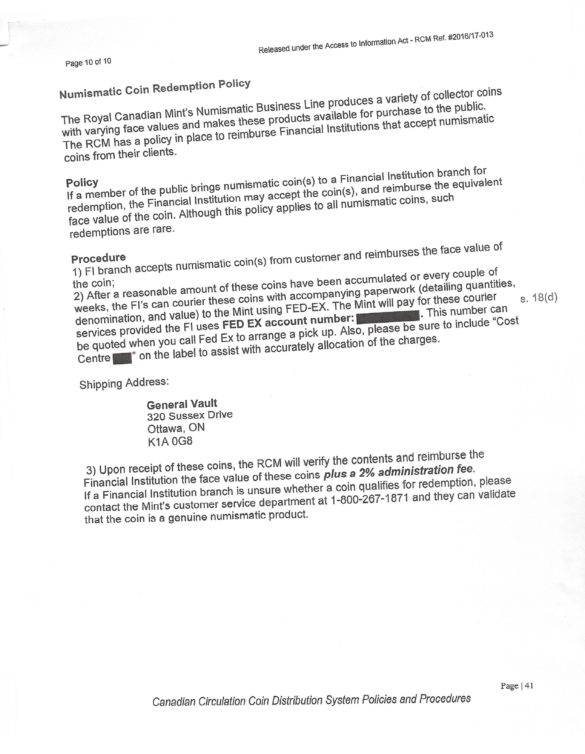Very Interesting Information About Manufactured Spend at the Mint
I’m currently writing a paper about the Royal Canadian Mint, and in the process of it, I submitted a request for information under the Access to Information Act. While most of the information was blacked out (which I am contesting), I did receive the Mint’s policy on bank handling of face-value coins (non-circulation legal tender coins). As a reminder, right now you can easily manufacture $2000 in spend by buying the maximum number of each type of face-value coins from the Mint online, with free shipping and no taxes.
Once you get your face-value coins, all you have to do is go to the bank and deposit them. My question has always been ‘what happens to the coins after they’re deposited?’. The Mint sent me the following policy for banks on handling these coins:
- FI [financial institution] branch accepts numismatic coin(s) from customer and reimburses the face value of the coin;
- […] the FI’s can courier these coins with accompanying paperword to the Mint using FED-EX. The Mint will pay for these courier services […].
So the Mint will actually pay for the bank shipping any coin to it. Also:
Upon receipt of these coins, the [Mint] will verify the contents and reimburse the Financial Instituton the face value of these coins plus a 2% administration fee.
When a bank sends face-value coins to the Mint, it will actually reimburse the bank the value of the coins with an additional 2% value. So that means a $2000 redemption would actually give the bank $2040 back!
What does this mean? Well, if a bank gives you problems, you can point them to this document. Further, don’t feel bad about depositing these coins! The bank doesn’t have to pay for shipping, and their time is compensated by the Mint.



Very interesting indeed.
Thanks for sharing!
Do you need to purchase enough coins to roll? Or is it possible to deposit a single coin of say, any ridiculous denomination coins come in?
No need to roll! Whatever they send you can be deposited as is
can you buy coins if you live in united states ?
Yep! Free shipping, no taxes
So this means manufactured spend is actually costing Canadian tax payers?
+1 on Mark’s comment. This means that the Canadian taxpayer, via the Mint, pays for
– original shipping of coins to buyer
– return Fedex from bank to Mint
– 2% admin expenses to bank
– any internal admin / processing at the Mint
So it’s a taxpayer subsidy to spend manufacturing consumers. Of course, these consumers will likely contribute back to the government via crazy airport fees…
You forgot about the CC fee, which is the only reason we’re MSing! I wouldn’t feel too bad about the taxpayer paying the CC fee while I pocket the equivalent in points (call it a tax credit). But all the expenses you mentioned are pure waste.